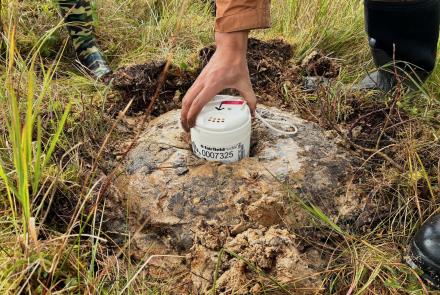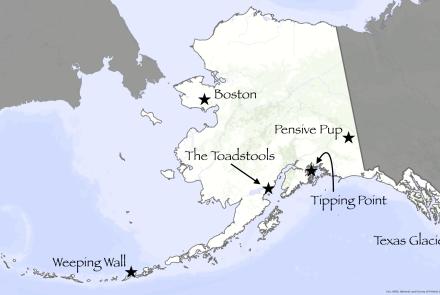Snake Oil or Salvation?
One morning last week I got one of those joking e-mails that look like press releases. This one supposedly announced the resignation of every last one of America's experts on every subject under the sun, who were giving up in disgust because no one ever paid any attention to what they had to say. That same evening, I heard a distinguished geophysicist give a brief speech on how to help solve America's energy problems, ease global warming, and cut air pollution from burning fossil fuels. Incidentally, his suggestion also did wonderful things for Alaska's economy, including its mining industry.
Of course, being an expert of long standing, Gene Wescott knew he'd be ignored. He spoke with the weary brevity of someone preaching to the choir-in this case, his immediate audience, the scientists and science followers gathered for the informal Arctic Round Table gathering-who knew his words would never convert the sinners in the pews down front.
Wescott's name has been in the news recently because of his association with research on sprites, spectacular electrical phenomena appearing high in the atmosphere. Over his long career, however, he's pursued many other aspects of geophysical science. Some decades ago, he worked on assessing Alaska's geothermal resources, those naturally occurring flows of hot water that may be tapped for heat directly, as they have been in the hot springs of the Interior and Southeast, or for generating electricity, as they are in Iceland. Wescott found that the Aleutians had some great geothermal resources, as might be expected where active volcanoes smolder away in a wet place. Unfortunately, none of the usable resources lay where they actually could be used. It's inefficient to pipe steam or hot water over long distances, and the Aleutians are not the best place to build big powerlines, especially with too few people to make use of a lot of power.
Wescott then briefly reviewed properties of a truly excellent fuel: hydrogen. Hydrogen packs a lot of energy into a tiny molecule. Furthermore, when you burn hydrogen, you don't get soot and suffocating gases-you get pure water. But hydrogen does burn easily. Wescott showed a photo of the fiery end of the zeppelin Hindenburg to remind his audience of why people worry about hydrogen's capacity for too-exuberant combustion. It's tough stuff to handle safely. However, he pointed out, Alaska is well endowed with zeolites, minerals so structured that-in effect-they provide molecular cages that can contain other substances. Zeolites make an excellent and safe storage medium for hydrogen.
Hydrogen is so keen to combine with other elements that there's no way to mine it like coal or pump it out of wells like oil. It has to be pried out of its compounds. Alaska is well supplied with one of those compounds-water. In fact, the Aleutians are virtually afloat in an ocean of it. Getting out the hydrogen can be expensive, though. It takes energy, for example electrical energy, to dissociate hydrogen from water. (In fact, that electrical current bubbles off hydrogen explains the occasional but terrifying explosion of a car battery when sparking from flawed jump-starting ignites this unexpected fuel.)
The expert summed up: Alaska has a virtually limitless source of a great fuel; the state has the zeolites to make its storage and handling feasible; on the Aleutians, the state has enough geothermal energy to generate electricity for processing hydrogen at an industrial scale.
Oh, by the way, he added. One of the best geothermal resources is very close to the excellent deep-water harbor on the island of Akutan. It's a good location for shipping to America's west coast or Asia. Then he sat down.



